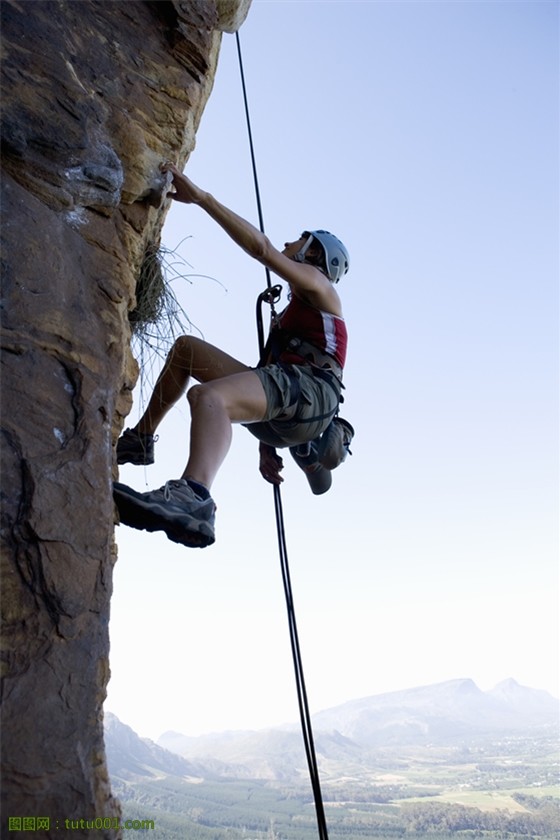阅读理解。

It was early morning. Peter Corbett helped Mark Wellman out of his wheelchair and onto the ground. They
stood before El Captain, a huge rock almost 1.2 kilometers high. Mark had long dreamed to climb El Captain
when he was a child. At the age of twenty-one, he had fallen while climbing mountain, losing his legs. But he
never lost his love for life.
Mark knew he couldn't finish the climb alone, but his friend Peter would be there to lend a helping hand.
They thought it would take seven days to reach the top. Now Peter climbed about 30 meters up and hit a piton
(岩钉) into the rock. Fastening (拴紧) one end of a 50-meter rope (绳子) to the piton, he let the other end of
the rope fall down. Mark caught the rope and fastened it to his belt. He next reached above his head and
fastened a T-bar (丁字铁) to the rope. Mark took a deep breath, pushed the T-bar up almost as far as his arms
could reach, and began the first pull-up. High above, Peter let out a cheer, "You're on your way."
For the first four days the two men progressed upward (向上) without accident. But on the fifth day, a
very strong wind began to blow, making it hard for Mark to hold on to his rope. But Mark kept on pushing up
the T-bar and pulling himself up.
It took them one day more than they had expected. But as the two heads appeared the group of people
waiting on the top went wild with joy.
Mark Wellman showed that if you set your heart and mind on something, no wall is too high, no dream
impossible.
1. With the help of his friend, Mark could climb up El Captain about _____ meters in height each day.
A. 300
B. 150
C. 50
D. 30
2. While climbing, Mark _____.
A. carried the T-bar on his back and stepped upward
B. pushed up the T-bar and pulled himself up
C. sat in his wheelchair and pushed himself up
D. held on to the rope drawn up by his friend
3. Which is the correct order of the steps before Mark`s climbing?
a. push up the T-bar
b. tie the rope to his belt
c. hit the piton into the rock
d. fasten the T-bar to the rope
e. tie the rope to the piton
A. c-e-b-d-a
B. e-c-a-b-d
C. e-b-d- c-a
D. b-d-e-c-a
4. Which of the following is true of Mark Wellman?
A. He realized his dream without anyone helping him.
B. He was badly injured when he climbed El Captain.
C. He dreamed to climb up El Captain for a long time.
D. He climbed up the rock by using a tool for the disabled.
5. What can we learn from the passage?
A. friend in need is a friend indeed.
B. Dreams will come true in the end.
C. Each step is important to success.
D. Nothing can stop a strong will.